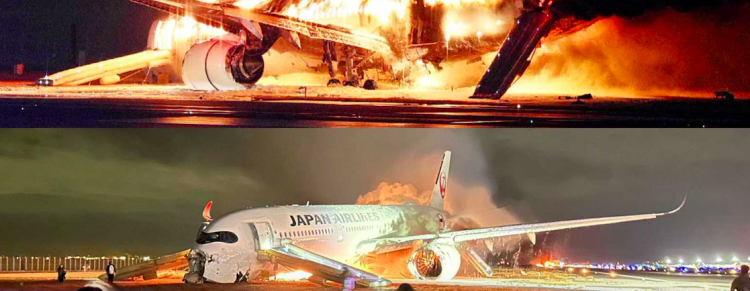Commercial Aircraft Emergency Evacuations: Theories and Rules
May 22,2025

An emergency evacuation of an aircraft is defined as ‘the urgent abandonment of an aircraft utilising all useable exits’.
These evacuations are rare but critical, and understanding the theories and rules behind them is essential for ensuring passenger safety.
Emergency Evacuation Scenarios
Emergency evacuations can become necessary due to various reasons, including:
– In-flight fires or detection of fumes/smoke in the cabin/cockpit
– Technical or structural failures, such as uncontrolled engine failure or engine fire during ground operations
– Security threats, like bomb threats or other security-related risks
Regulations and Procedures
Commercial aircraft must demonstrate that they can be completely evacuated within 90 seconds using only half of the total number of emergency exits. This 90-second rule simulates potential exit blockages due to fire or structural damage.
– Emergency exits include normal boarding doors, smaller exits, overwing exits, and cockpit windows/hatches.
– Exits above a certain height require inflatable evacuation slides or emergency egress ropes.
Common Issues and Challenges
Despite rigorous training, emergency evacuations can be complex. Common issues include:
– Communication failures between crew members and passengers
– Delays in initiating evacuations
– Difficulty operating emergency exits or deploying slides
– Presence of fire, smoke, or toxic fumes hindering evacuation

Importance of Cabin Crew Training
Cabin crew play a vital role in emergency evacuations. They are trained to:
 Assess situations and communicate effectively
Assess situations and communicate effectively Coordinate with passengers for a safe and efficient evacuation
Coordinate with passengers for a safe and efficient evacuation Operate emergency exits and deploy slides
Operate emergency exits and deploy slides
Case Studies
Recent events have demonstrated the importance of effective emergency evacuations:
– Japan Airlines A350 evacuation at Tokyo-Haneda Airport (2024)
– Delta Air Lines Bombardier CRJ900 evacuation at Toronto-Pearson International Airport (2025)
Cabin Advancements
Aviation safety has improved over the years, with advancements such as:
– Floor aisle lighting strips
– Outward-opening emergency exits
– Emphasis on passenger safety briefings
Conclusion
Commercial aircraft emergency evacuations require careful planning, effective communication, and swift action.
Understanding the theories and rules behind these evacuations is crucial for ensuring passenger safety and minimising risks.